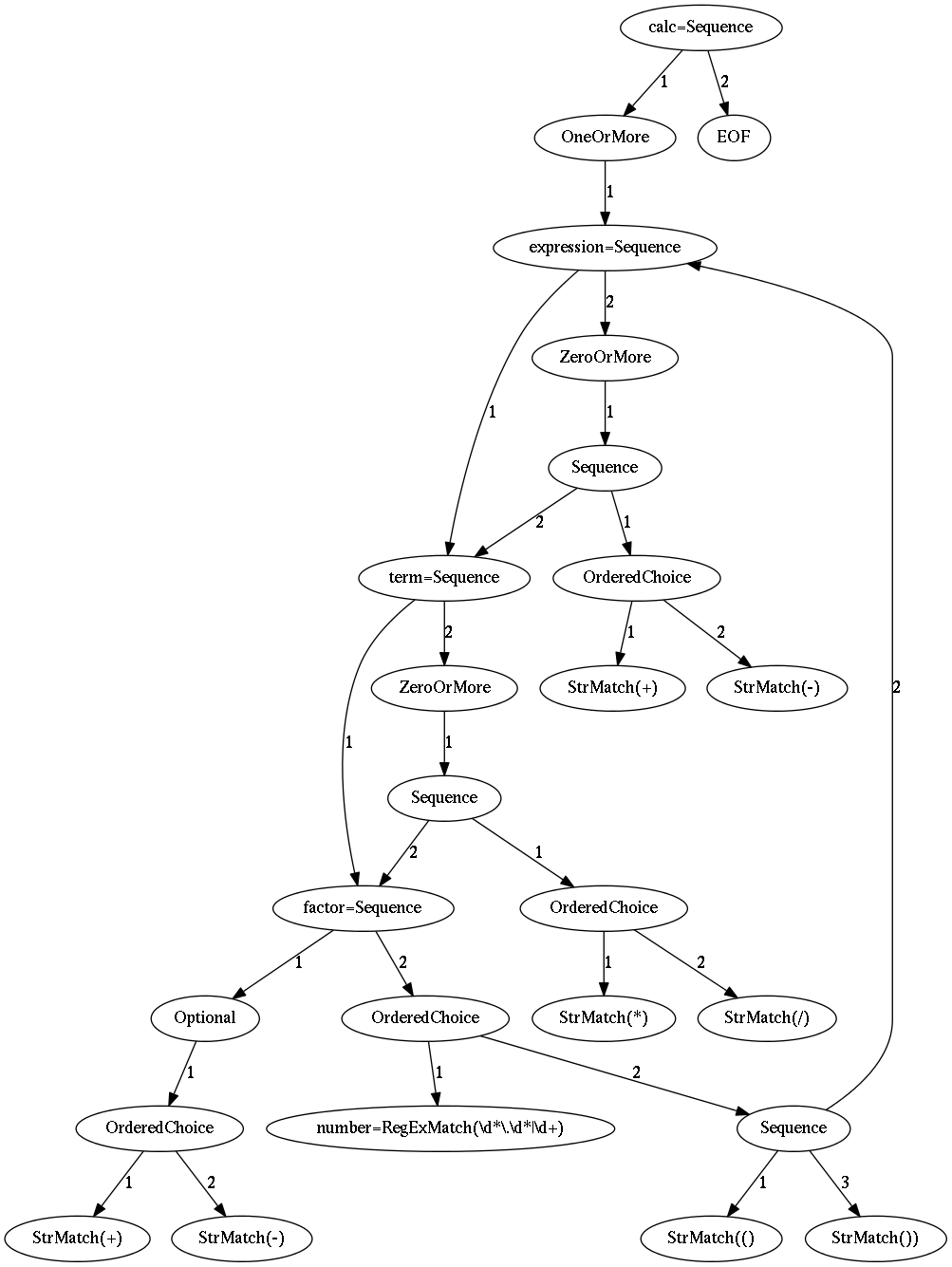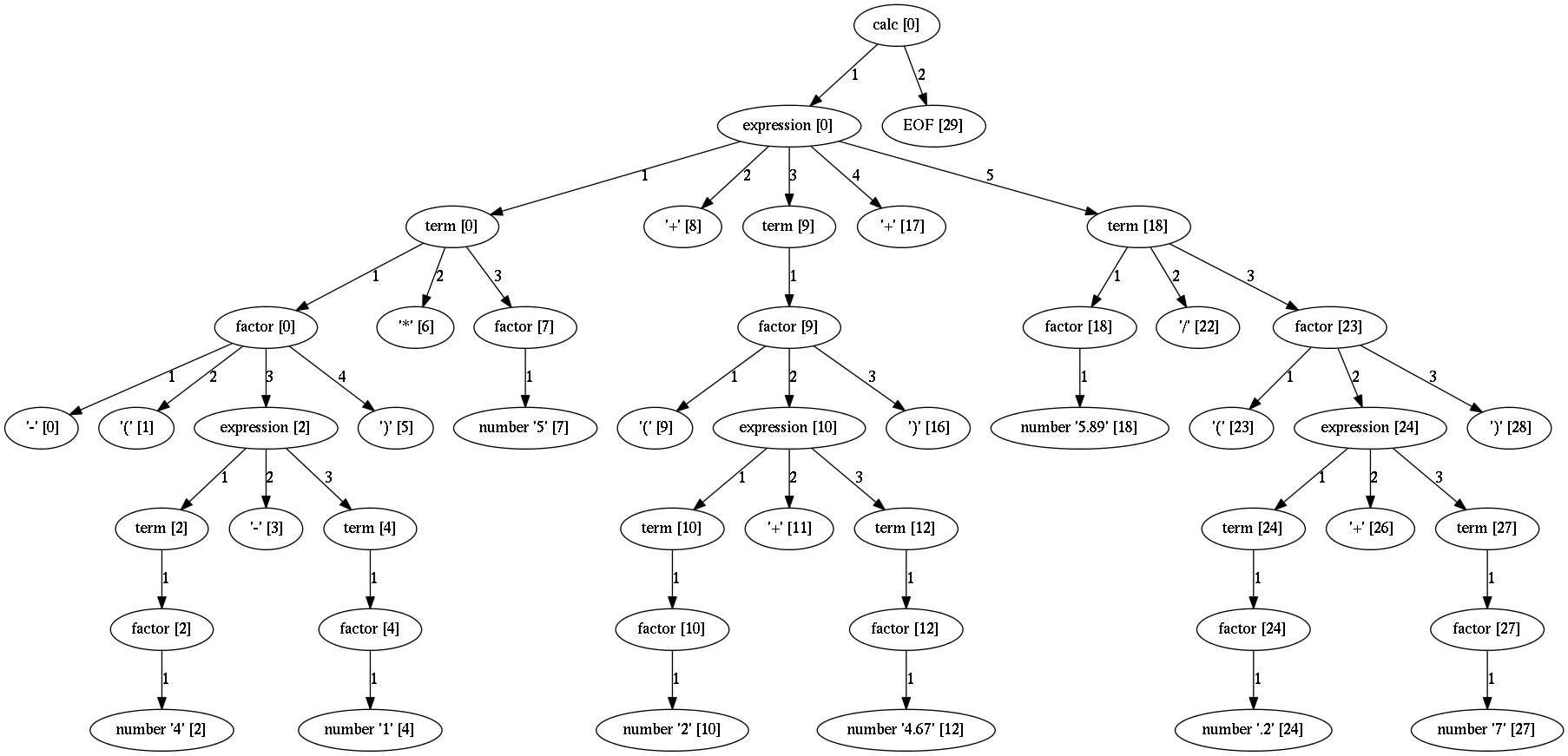Getting started¶
Installation and your first steps with Arpeggio.
Installation¶
Arpeggio is written in Python programming language and distributed with
setuptools support. If you have pip tool installed the most recent stable
version of Arpeggio can be installed form
PyPI with the following command:
$ pip install Arpeggio
To verify that you have installed Arpeggio correctly run the following command:
$ python -c 'import arpeggio'
If you get no error, Arpeggio is correctly installed.
To install Arpeggio for contribution see here.
Installing from source¶
If for some weird reason you don't have or don't want to use pip you can still
install Arpeggio from source.
To download source distribution do:
-
download
$ wget https://github.com/textX/Arpeggio/archive/v1.1.tar.gz -
unpack
$ tar xzf v1.1.tar.gz -
install
$ cd Arpeggio-1.1 $ python setup.py install
Quick start¶
Basic workflow in using Arpeggio goes like this:
Write a grammar. There are several ways to do that:
-
The canonical grammar format uses Python statements and expressions. Each rule is specified as Python function which should return a data structure that defines the rule. For example a grammar for simple calculator can be written as:
from arpeggio import Optional, ZeroOrMore, OneOrMore, EOF from arpeggio import RegExMatch as _ def number(): return _(r'\d*\.\d*|\d+') def factor(): return Optional(["+","-"]), [number, ("(", expression, ")")] def term(): return factor, ZeroOrMore(["*","/"], factor) def expression(): return term, ZeroOrMore(["+", "-"], term) def calc(): return OneOrMore(expression), EOFThe python lists in the data structure represent ordered choices while the tuples represent sequences from the PEG. For terminal matches use plain strings or regular expressions.
-
The same grammar could also be written using traditional textual PEG syntax like this:
number <- r'\d*\.\d*|\d+'; // this is a comment factor <- ("+" / "-")? (number / "(" expression ")"); term <- factor (( "*" / "/") factor)*; expression <- term (("+" / "-") term)*; calc <- expression+ EOF; -
Or similar syntax but a little bit more readable like this:
number = r'\d*\.\d*|\d+' # this is a comment factor = ("+" / "-")? (number / "(" expression ")") term = factor (( "*" / "/") factor)* expression = term (("+" / "-") term)* calc = expression+ EOFThe second and third options are implemented using canonical first form. Feel free to implement your own grammar syntax if you don't like these (see modules
arpeggio.pegandarpeggio.cleanpeg).
Instantiate a parser. Parser works as a grammar interpreter. There is no code generation.
from arpeggio import ParserPython
parser = ParserPython(calc) # calc is the root rule of your grammar
# Use param debug=True for verbose debugging
# messages and grammar and parse tree visualization
# using graphviz and dot
Parse your inputs
parse_tree = parser.parse("-(4-1)*5+(2+4.67)+5.89/(.2+7)")
If parsing is successful (e.g. no syntax error if found) you get a parse tree.
Analyze parse tree directly or write a visitor class to transform it to a more usable form.
For textual PEG syntaxes
instead of ParserPyton instantiate ParserPEG from arpeggio.peg or
arpeggio.cleanpeg modules. See examples how it is done.
To debug your grammar set debug parameter to True. A verbose
debug messages will be printed and a dot files will be generated for parser
model (grammar) and parse tree visualization.
Here is an image rendered using graphviz of parser model for calc grammar.
And here is an image rendered for parse tree for the above parsed calc expression.
Read the tutorials¶
Next, you can read some of the step-by-step tutorials (CSV, BibTex, Calc).
Try the examples¶
Arpeggio comes with a lot of examples. To install and play around with the examples follow the instructions from the README file.

